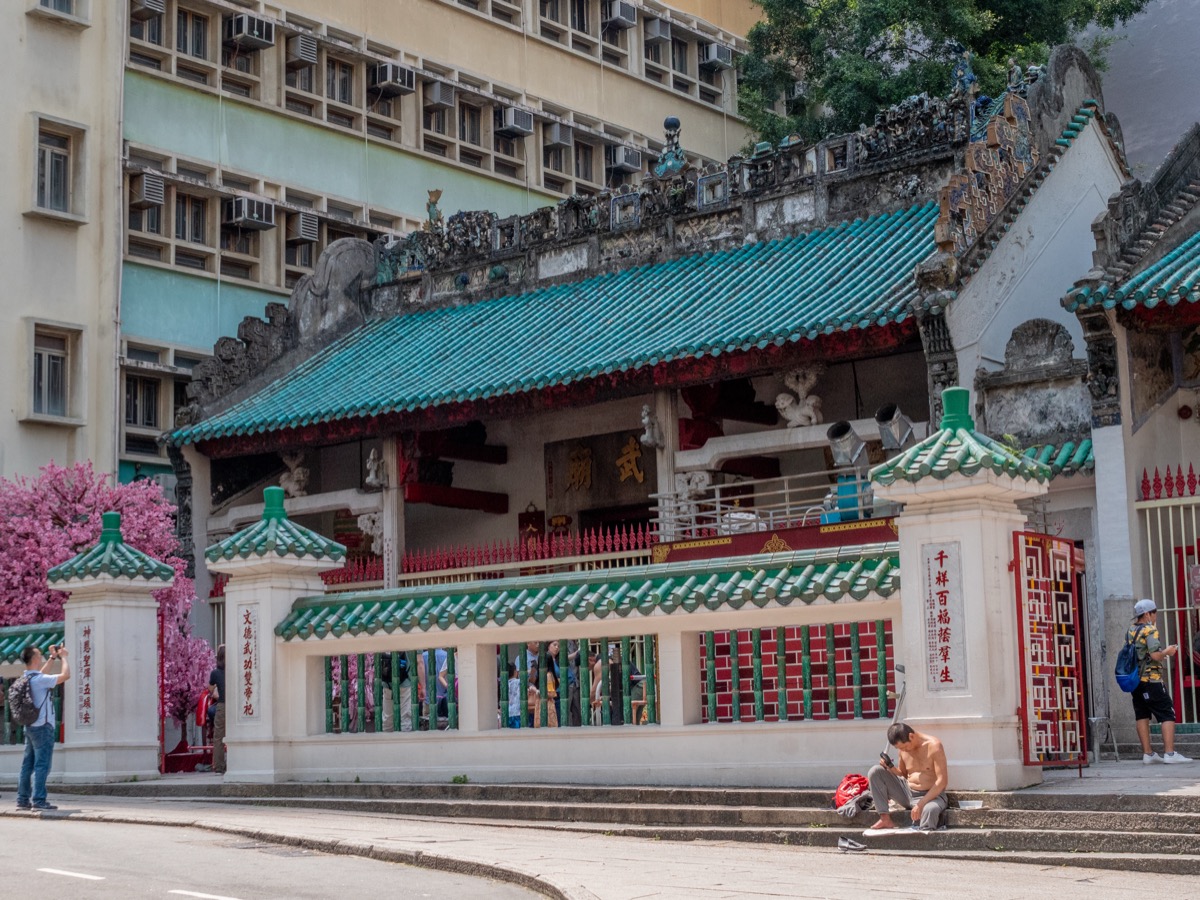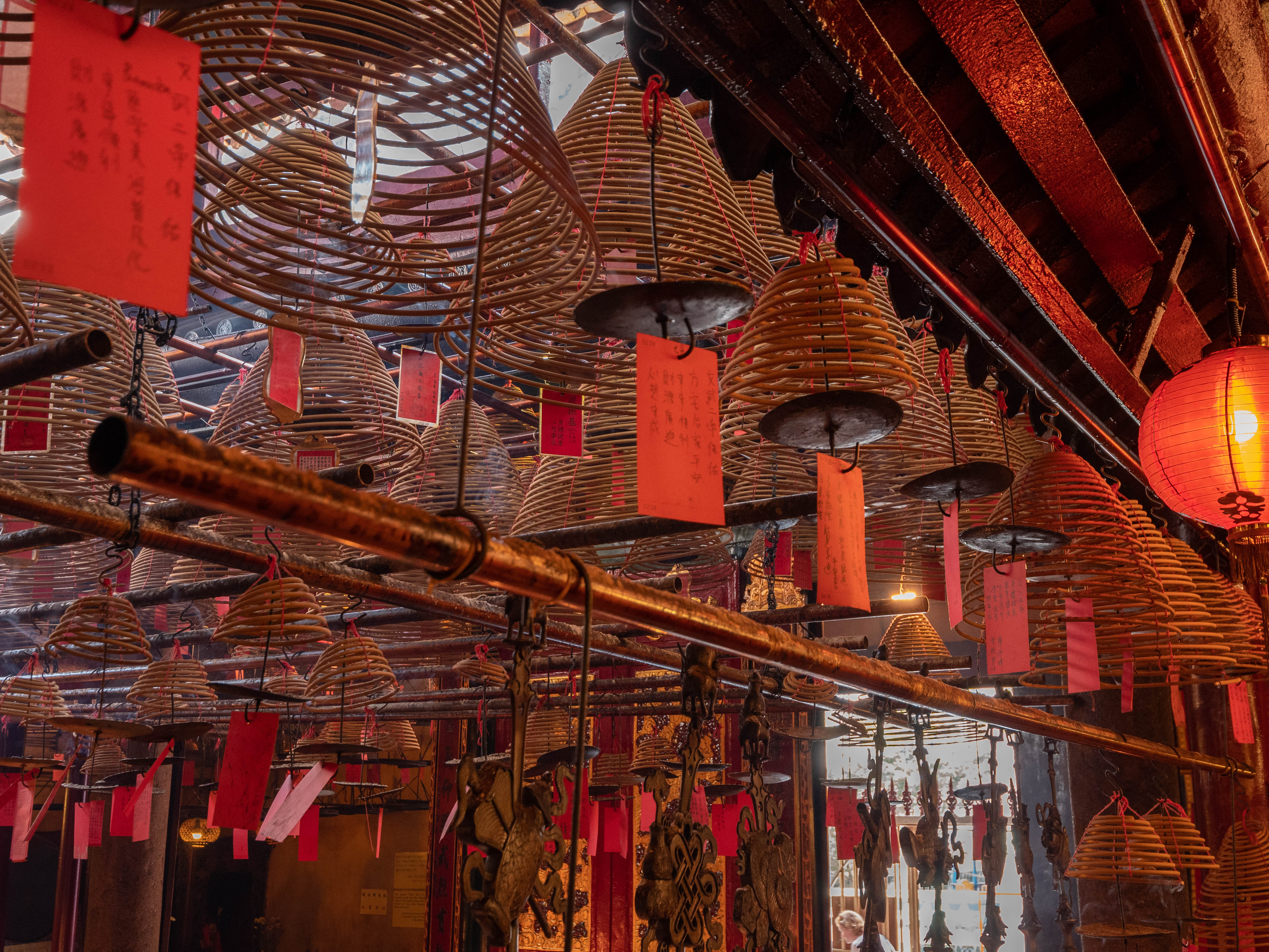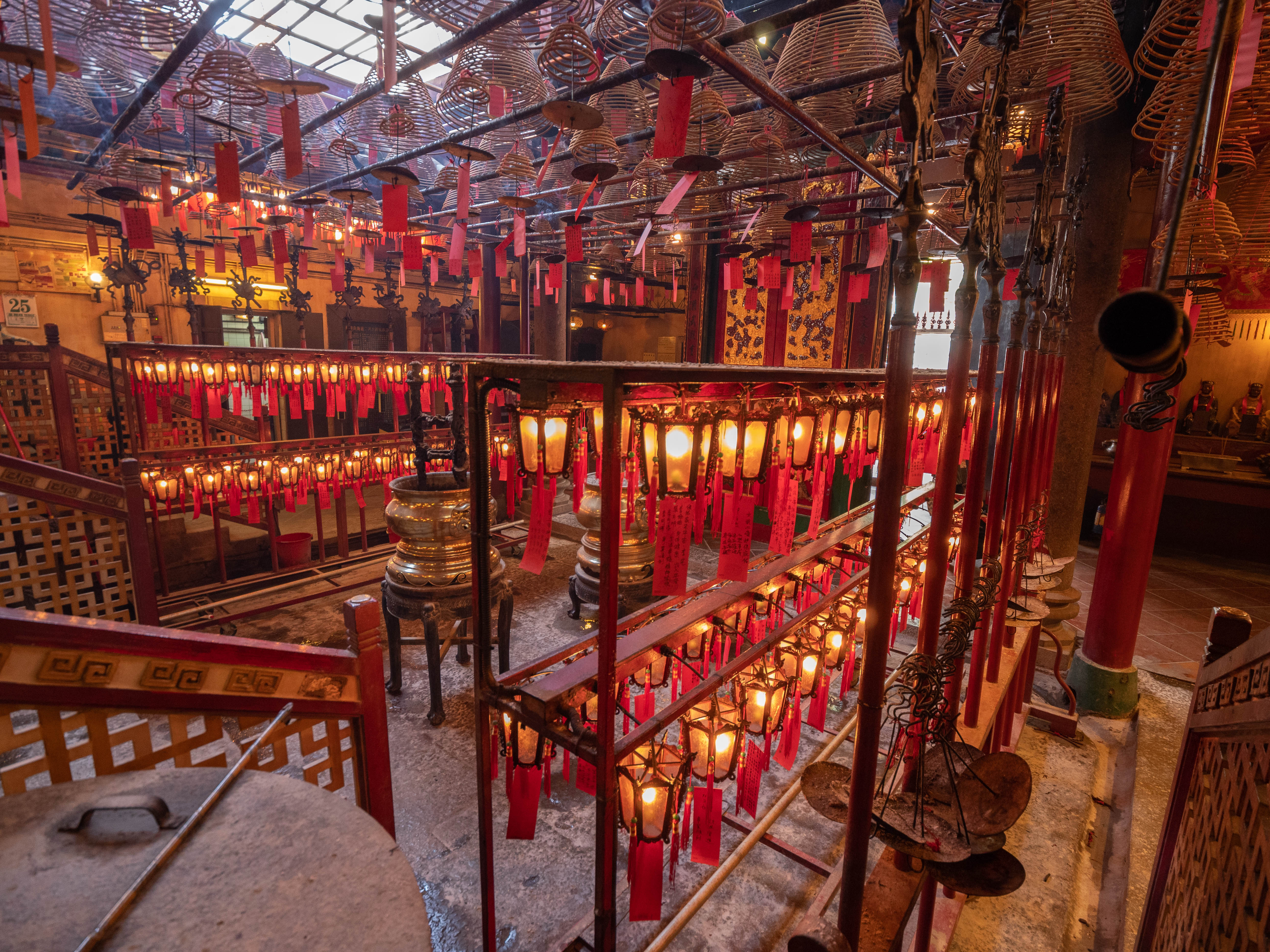An Old Neighborhood with a Vibrant Soul
Sheung Wan (上環) is one of the first urbanized districts in Hong Kong, just west of Central. It was here that the British landed in 1841, marking the beginning of the colony. Yet Sheung Wan has remained primarily a Chinese neighborhood, with its commercial traditions, temples, and lively alleys.
Today, it also attracts a creative, expatriate, and local population, drawn by the balance between neighborhood life and cultural buzz.
Living Tradition and Craftsmanship
Sheung Wan is a bastion of urban Cantonese culture:
- Chinese herbal shops: windows filled with roots, mushrooms, horns, dried seahorses…
- Traditional medicine market on Wing Lok Street.
- Stores selling dried fruits and seafood: sharks, abalone, scallops, dried oysters.
- Antique shops and stores of old religious or domestic objects.
Hollywood Road, famous for its galleries and antique shops, runs through the district.
Temples and Spirituality
The neighborhood hosts several traditional temples:
- Man Mo Temple, dedicated to the god of literature (Man) and war (Mo). It is one of the oldest and most visited temples in Hong Kong.
- Small Taoist neighborhood shrines, with hanging spiral incense.
- Offerings and domestic altars visible in the alleys.
These places offer a spiritual calm in the urban fabric.
Street Art, Cafés and Creators
Since the 2010s, Sheung Wan has established itself as a hub for contemporary creation:
- Independent art galleries and design boutiques.
- Murals and graffiti, especially in the alleys around Po Hing Fong and Tai Ping Shan.
- Specialty cafés, local roasters, artisan bakeries.
- Lifestyle shops, Japanese minimalism, local brands, upscale stationery.
The area around Tai Ping Shan Street has become a trendy micro-district, both calm and stylish.
A Particular Atmosphere
In Sheung Wan, contrasts are subtle:
- Steep stairs, narrow sidewalks, laundry hanging between buildings.
- Miniature parks, old trees growing between walls.
- Sounds of Cantonese, hammer on metal, bus whistles.
- Old Hong Kong and gentle modernity, without the bustle of Mong Kok or Central.
It’s a human-scale neighborhood, best discovered slowly, by wandering.
Access and Recommended Walk
- MTR access: Sheung Wan station (blue line).
- On foot from Central or via the Mid-Levels Escalator.
- To see:
- Man Mo Temple.
- Hollywood Road and its galleries.
- Wing Lok Street (medicines).
- PoHo (Po Hing Fong) for cafés and street art.
Conclusion
Sheung Wan is a district of contrast and balance: between ancient commerce and contemporary culture, spirituality and design, slowness and movement. It is one of the rare places in Hong Kong where past and present talk without erasing each other, in a precious urban harmony.
Man Mo Temple
The Man Mo Temple is one of the oldest and most famous temples on Hong Kong Island, located on Hollywood Road in the Sheung Wan district.
It is dedicated to two Chinese deities:
- Man Cheong (文昌帝君) – The god of literature, revered by students and scholars,
- Mo Tai (武帝) – The god of war, associated with loyalty and bravery, often worshipped by soldiers and officials.
- It was built in 1847.




